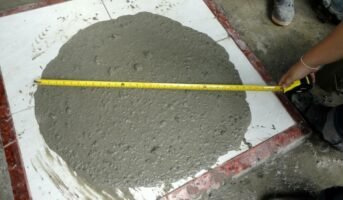Cranes have a history that dates back thousands of years, during which time they have played an essential role in construction and other sites.
Cranes, which had previously relied on a manual pulley system, began to be powered by an engine and operated by a person during the time of the Industrial Revolution when they became an essential part of the process of modernising the globe.
These days, several kinds of cranes are used for practically every construction or industrial project imaginable, and each one is optimised for a particular function within the industry.
We have included a rundown of the various types of cranes, both mobile and fixed, as well as their primary functions in order to assist you in making the best possible acquisition.
Types of cranes: What are mobile cranes?
Mobile cranes, in comparison to normal cranes, are more mobile due to the fact that they are placed on crawlers or wheels. Some varieties of mobile cranes are so transportable that they may even be transported on highways. Mobile cranes are an extremely popular piece of equipment to have on hand for a wide variety of projects due to their versatility and capacity to move freely about construction sites while also bearing a significant amount of weight.
Types of mobile cranes
There are several distinct kinds of mobile cranes, each of which is optimised for a certain
kind of job. These types cranes include:
-
Carry deck crane

Source: Pinterest
The pick and carry crane was initially designed in the 1980s, but its successor, the carry deck crane, is a more recent innovation. Because of their compact size, four wheels, and ability to rotate 360 degrees, these cranes are more easily transported than others. Because of their portability, ease of setup, and ability to move in and out of tight and wide locations, carry deck cranes have become common fixtures on many construction sites.
-
Crawler crane

Source: Pinterest
Crawlers are vehicles that move along tracks, as opposed to carrying deck cranes. Crawlers are mounted on a special undercarriage that has a set of rubber tracks in place of wheels. Crawlers with tracks may operate on unimproved or soft surfaces without collapsing, although their turning radius is reduced as a result.
Crawler cranes are able to adapt to a wide variety of landscapes owing to their retractable arms. Crawlers, on the other hand, are bulkier, need more specialised installation, and can’t be carried between sites; thus, they’re better suited to projects that will last for a while.
-
Floating crane

Source: Pinterest
These floating cranes, often called crane ships or crane vessels, are used in maritime settings, including ports and oil rigs. These cranes have been around since the mediaeval era, and owing to constant improvements in technology, they have served the construction industry over the years.
Sheerleg cranes and semi-submersible cranes are only two of the modern varieties of floating cranes available. However, the only real distinction between floating cranes and land-based cranes is their location of operation.
-
Rough terrain crane

Source: Pinterest
These cranes are employed for pick-and-carry tasks both on and off-road, as their names suggest. A rough terrain crane resembles a crawler crane in appearance, but its undercarriage is mounted with four enormous rubber tires and, in most cases, four-wheel drive. Additionally, rough terrain cranes include telescoping platforms and outriggers to increase stability while also making manoeuvrability much more controllable in confined and unlevel situations.
-
Truck-mounted crane

Source: Pinterest
The carrier (the truck) and the boom (arm) make up the two main components of a truck-mounted crane. Because of how they’re constructed, they don’t need any special arrangements or transportation mechanisms to hit the road.
Cranes placed on trucks are able to move gently while carrying a heavy load because they are equipped with counterweights and outriggers. If you need to examine, maintain, or construct a bridge, you may hire a specialised truck-mounted crane.
Types of cranes: What are fixed cranes?
The majority of fixed cranes must be transported to the construction site and installed there before they can be used since these cranes are normally permanently installed in a single area. Fixed cranes are less mobile than their mobile counterparts, but they make up for this disadvantage by being able to hoist higher weights to even greater heights. These sorts of cranes are designed to remain in one location throughout the life of a project.
Types of fixed cranes
There are several distinct categories of fixed cranes that are used in construction and other sites, including the following:
-
Bridge/Overhead crane

Source: Pinterest
A bridge crane, often called an overhead crane, is a kind of large, heavy-duty crane commonly used in construction and similar settings. The hoist (raising mechanism) moves along the crane’s bridge, which lends credence to the term “bridge crane.” The crane is anchored by two metal beams that span the load. There are two distinct categories of overhead cranes.
-
Gantry
The gantry crane is a kind of overhead crane that is occasionally used interchangeably with the more common name. Most obviously, a gantry crane is erected on a track and rests on two a-frame steel legs, whereas a bridge crane rests on a single steel beam.
-
Jib Crane
Bridge cranes also come in a jib crane style. Commonly employed for repeated activities, such cranes are positioned permanently over a workplace. The jib may be fixed on a wall or a column on the floor and may be moved in conjunction with the hoist.
-
Hammerhead crane

Source: Pinterest
It’s not uncommon to see hammerhead cranes on a building site. This particular crane makes use of a horizontally-mounted swivelling lever supported by a stationary tower. The trolley is supported by the extended front portion of the arm, which is balanced by the rear section.
Racking is another option available on hammerhead cranes, which enables the trolley to go forward and backwards anywhere along the crane arm. These cranes need on-site assembly and may be quite hefty once completed.
-
Telescopic crane

Source: Pinterest
A hydraulic cylinder in the boom of a telescopic crane enables the arm to extend and retract, much like a telescope. Although a telescopic crane is often used at a single construction site, many of them are really mobile and placed on trucks for easy transportation.
Telescopic cranes are very versatile because of the collapsible boom that allows them to be compacted for storage or transport, making them useful for both temporary construction projects and rescue operations in times of emergency.
-
Tower Crane

Source: Pinterest
Tower cranes are utilised frequently during the construction of big structures due to their incredible lifting capacities and aesthetic appeal. Tower cranes are so large that they need a separate cab from which the whole machine may be operated. The tower section of a tower crane is supported by a concrete foundation, and the jib extends horizontally from the mast.
A stationary jib has an operational dolly that moves components horizontally, but a luffing jib has the option to move upward and downward. The equipment (also known as a slewing mechanism) that directs the movement of the crane along its axis is housed atop the mast of the crane.
Due to their scale, tower cranes are erected concurrently with the building; after the structure is finished, the tower crane is dismantled. Tower cranes are crucial during the construction of a tall structure due to their height, lifting capacity, and other qualities.
Types of cranes: Selecting the appropriate crane
Determine the topography of the project, the magnitude of the project area, the climate, and the volume of the materials before selecting a crane. You should also take into consideration how long the project will last, as some cranes, such as the crawler crane, are more suited to the completion of jobs that will last for an extended period of time compared to their counterparts. When you have all of the specifications for your project, you will be able to identify the kind of crane that will be required to conduct a successful construction project.
FAQs:
What sort of crane do I need to rent?
Considerations such as the volume of the load, the height to which it has to stretch, the stability of the ground, and the ease of access to the site can help you choose the right crane.
How do the prices of the various cranes vary?
Crane rental rates are affected by a wide variety of variables, the most important of which is the crane's size and capacity. There is a premium price for using a larger crane instead of a smaller one. This is due to the fact that they can typically lift and shift more weight between differing heights, which is an advantage in many situations.
Which crane type is the most prevalent?
Although several types of cranes are currently available, mobile cranes are particularly well-liked. The construction industry commonly makes use of these cranes' adaptability to lift and move big materials across short distances.
Which crane has the greatest degree of stability?
Tower cranes have a loading and lifting capability greater than any other kind of crane in the world. It is impossible for any other kind of crane to equal their height-carrying capabilities. They have tremendous stability and can endure the most difficult jobs.
What is the importance of cranes in the construction industry?
The construction sector relies heavily on cranes, which are used for a wide variety of tasks, including the lifting and transportation of large equipment and cargo, as well as the building of roads, bridges, and other structures.
Housing News Desk is the news desk of leading online real estate portal, Housing.com. Housing News Desk focuses on a variety of topics such as real estate laws, taxes, current news, property trends, home loans, rentals, décor, green homes, home improvement, etc. The main objective of the news desk, is to cover the real estate sector from the perspective of providing information that is useful to the end-user.
Facebook: https://www.facebook.com/housing.com/
Twitter: https://twitter.com/Housing
Email: [email protected]











